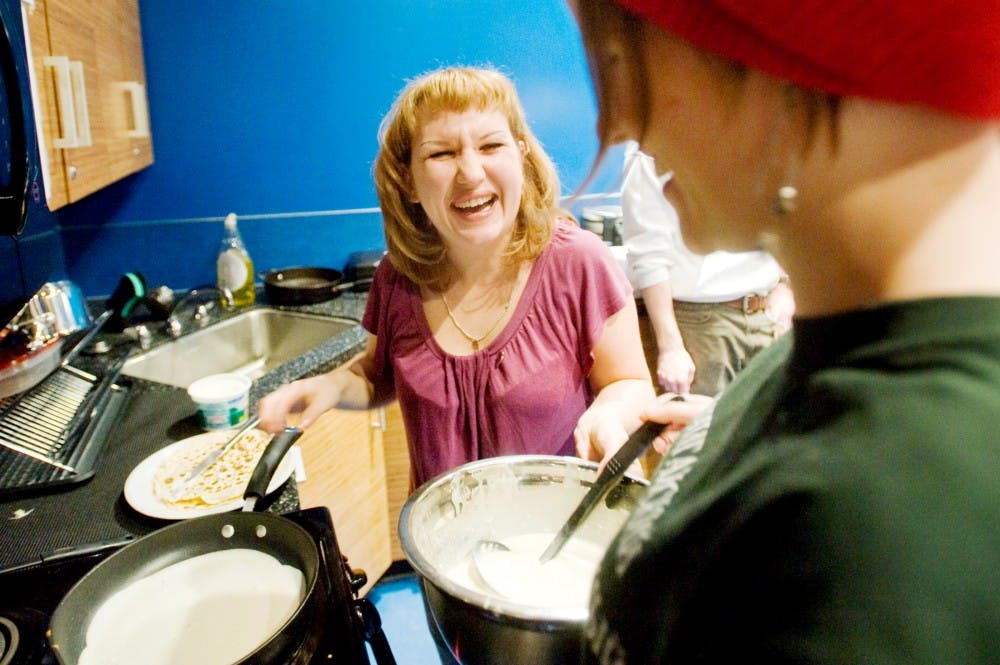As Russia native Olga Eremina held a spatula in one hand and a frying pan in the other on Friday evening, she scrunched her nose at the smell of the burnt blini bubbling on the stove top in front of her.
“The first one is always an experiment,” she said.
“So the next one is going to be edible.”
Eremina, a recent MSU alumna who plans to return to Russia, showed more than a dozen MSU Russian Club members how to cook a blini — a traditional Russian food resembling a thin pancake — during the club’s celebration of Maslenitsa in the basement kitchen of Owen Hall last weekend.
In Russia, the holiday is celebrated during the seventh week before Pascha, or Easter, and has both Orthodox and pagan roots, said Laura Young, president of the MSU Russian Club.
“It’s basically celebrating the coming of spring,” she said. “In Russia, they’ll have big cultural celebrations of it. They’ll get dressed up in traditional dress and dance and play lots of games outside.”
According to the Office for International Students and Scholars, MSU has 26 students from Russia as of fall 2011.
Because the holiday marks the end of cold winter days and the return of sunshine, Young said the blini, which are made of milk, eggs, flour and salt, serve as a reminder of the warm days ahead.
“They’re yellow and circular, so they’re supposed to represent the sun,” she said.
While Eremina and Young polished their blini cooking skills, other members of the MSU Russian Club decorated Lady Maslenitsa dolls — paper effigies that serve as mascots for the holiday.
As he colored his doll, economics and political science junior Andrew Stone said celebrating the Russian holiday reminds him of similar American traditions.
“It’s kind of like Groundhog Day to say goodbye to winter and hello to spring,” he said.
Setting her yellow crayon down, Russian junior Kathryn Smart held up her doll for inspection.
“I’m just in charge of the hair,” she said. “This is originally from my childhood of doing arts
and crafts. The face — I’m not quite sure where that came from.”
Because Lady Maslenitsa dolls represent winter, Young said after they’re finished creating them, individuals burn the figures to put winter to rest.
Although this year club members are not burning the dolls by the rock on Farm Lane as they did last year to celebrate Maslenitsa, Stone said being able to cook blini this year was an equal trade-off.
For zoology junior Neva Anasovich, the hands-on activity served as a tangible connection to what she’s learning in her classes, she said.
“It makes learning the language a little more interesting to actually try some of the food and be with people who are from Russia,” she said.
Eremina said the MSU Russian Club’s celebration wasn’t far off from what she saw at home growing up in Russia.
“When we do it at home, we wouldn’t have students or strangers with us. We would be with family like Christmas here,” she said.
Support student media!
Please consider donating to The State News and help fund the future of journalism.
“But other than that, this is very authentic.”
Discussion
Share and discuss “MSU Russian Club welcomes spring with Maslenitsa ” on social media.





